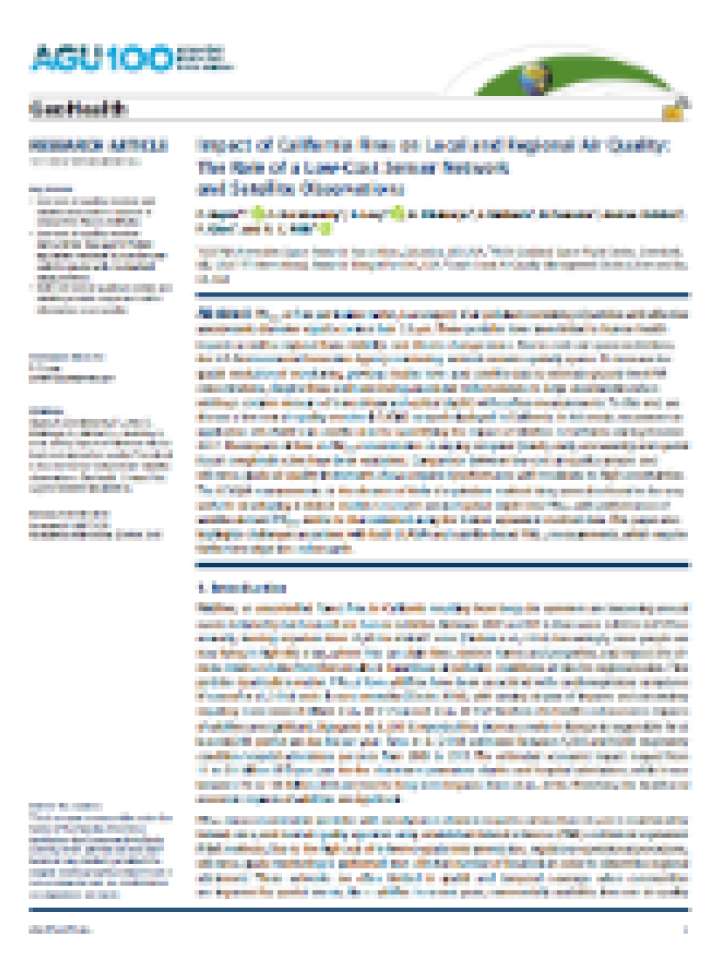Impact of California fires on local and regional air quality: the role of a low‐cost sensor network and satellite observations
PM2.5, or fine particulate matter, is a category of air pollutant consisting of particles with effective aerodynamic diameter equal to or less than 2.5 μm. These particles have been linked to human health impacts as well as regional haze, visibility, and climate change issues. Due to cost and space restrictions, the U.S. Environmental Protection Agency monitoring network remains spatially sparse. To increase the spatial resolution of monitoring, previous studies have used satellite data to estimate ground‐level PM concentrations, despite these estimates being associated with moderate to large uncertainties when relating a column measure of aerosol (aerosol optical depth) with surface measurements.
To this end, we discuss a low‐cost air quality monitor (LCAQM) network deployed in California. In this study, we present an application of LCAQM and satellite data for quantifying the impact of wildfires in California during October 2017. The impacts of fires on PM2.5 concentration at varying temporal (hourly, daily, and weekly) and spatial (local to regional) scales have been evaluated. Comparison between low‐cost air quality sensors and reference‐grade air quality instruments shows expected performance with moderate to high uncertainties. The LCAQM measurements, in the absence of federal equivalent method data, were also found to be very useful in developing statistical models to convert aerosol optical depth into PM2.5 with performance of satellite‐derived PM2.5, similar to that obtained using the federal equivalent method data. This paper also highlights challenges associated with both LCAQM and satellite‐based PM2.5 measurements, which require further investigation and research.
Explore further
